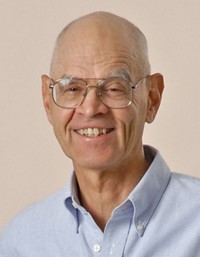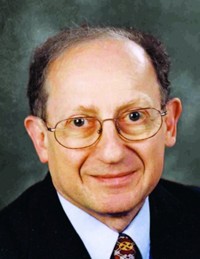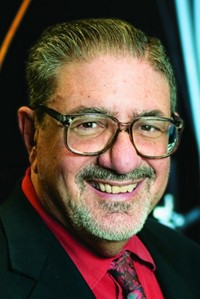Advertisement
Grab your lab coat. Let's get started
Welcome!
Welcome!
Create an account below to get 6 C&EN articles per month, receive newsletters and more - all free.
It seems this is your first time logging in online. Please enter the following information to continue.
As an ACS member you automatically get access to this site. All we need is few more details to create your reading experience.
Not you? Sign in with a different account.
Not you? Sign in with a different account.
ERROR 1
ERROR 1
ERROR 2
ERROR 2
ERROR 2
ERROR 2
ERROR 2
Password and Confirm password must match.
If you have an ACS member number, please enter it here so we can link this account to your membership. (optional)
ERROR 2
ACS values your privacy. By submitting your information, you are gaining access to C&EN and subscribing to our weekly newsletter. We use the information you provide to make your reading experience better, and we will never sell your data to third party members.
Synthesis
Arthur C. Cope Scholar Awards
by Arlene Goldberg-Gist
February 25, 2008
| A version of this story appeared in
Volume 86, Issue 8

Daniel A. Singleton, 48, has always been a high achiever. He was valedictorian of his high school graduating class in Byesville, Ohio, and graduated in 1980 from Case Western Reserve University, Cleveland, with the highest honors accorded to a B.S. degree in chemistry. He received a Ph.D. in chemistry under Paul G. Gassman from the University of Minnesota, Minneapolis, in 1986. Then, as a National Institutes of Health postdoctoral fellow, he studied under Barry M. Trost at the University of Wisconsin, Madison.
Currently the Davidson Professor of Science at Texas A&M University, Singleton has combined a love of teaching with prolific and rewarding research. The work in his lab revolves around four active research areas: combinatorial kinetic isotope effects and the mechanism of organic reactions; experimental organic transition states from kinetic isotope effects; asymmetric amplification and absolute asymmetric synthesis; and dynamic effects on reaction selectivity.
A colleague and scientific collaborator of Singleton's on orotic acid decarboxylation says that Singleton is "the leading figure in organic reaction mechanisms in his age group in the world. No one else has so dramatically advanced the way reaction mechanisms can be studied."
Singleton has attained these advances one research study at a time. Key to the research group's study of organic, organometallic, and bioorganic reaction mechanisms is the determination of kinetic isotope effects (KIEs). In the mid-1990s, his group developed a method for the high-precision combinatorial determination of small KIEs at natural abundance by nuclear magnetic resonance. According to Singleton, "Its direct applicability to complex unlabeled reactants makes this methodology one to two orders of magnitude faster than studies requiring labeling." The technique is also more versatile because it can look at a great number of reactions that would have been impractical or impossible to study by labeling or mass spectral methods.
Singleton considers the study of dynamic effects in ordinary reactions in solution to be the cutting edge of research in his group. The group found that "dynamic effects play a role in organic reactions much more often than currently thought," he says. "Our goal," he says, "is to revise the fundamental understanding of reactivity and selectivity in organic chemistry."
In 2007, Singleton started Process Origins, a company with the explanatory tagline: "Protect your process. Learn theirs." According to the company's website, "Process Origins uses state-of-the-art isotopic analysis and related tools to uncover the chemical processes by which end-product pharmaceuticals, agrochemicals, and other high-value chemicals have been made."
Singleton's list of published research is extensive. He has contributed to two books, has three patents, and has presented numerous papers and invited lectures. He has served as a temporary member of the NIH Medicinal Chemistry Study Section, as chair of the Texas A&M Section of the American Chemical Society, and, currently, as associate editor of the Journal of Organic Chemistry.
Included among Singleton's previous awards are the Carl F. Prutton Prize in Chemistry from Case Western Reserve University (1981), the Lee Irvin Smith Award in Organic Chemistry from the University of Minnesota (1985), and the Association of Former Students Distinguished Teaching Award from the Texas A&M College of Science (1995).
Other than a brief stint as an associate staff chemist with General Electric Corporate Research & Development in 1981-82, Singleton has spent his career thus far at Texas A&M. He rose from assistant professor of chemistry in 1987 to associate professor in 1993 to professor in 1998.
Certainly, teaching has meant a great deal to Singleton. According to him, all of his Ph.D. graduates and former postdocs are currently employed in the chemical profession; three hold academic faculty positions.
Singleton's colleague says, "Singleton's work is constantly testing the limits of understanding reaction mechanisms. In all of his work, Singleton has been concerned with gaining understanding of fundamental issues. His groundbreaking work sets the highest standard for studies of reaction pathways."





Join the conversation
Contact the reporter
Submit a Letter to the Editor for publication
Engage with us on Twitter